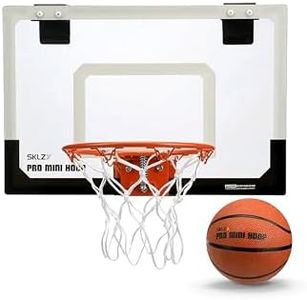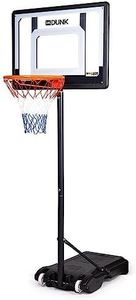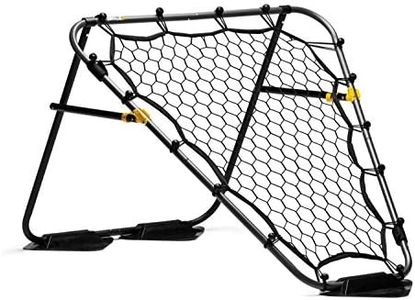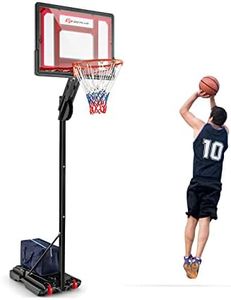We Use CookiesWe use cookies to enhance the security, performance,
functionality and for analytical and promotional activities. By continuing to browse this site you
are agreeing to our privacy policy
10 Best Outdoor Basketball Hoops
From leading brands and best sellers available on the web.Buying Guide for the Best Outdoor Basketball Hoops
Choosing the best outdoor basketball hoop can make your playing experience much more enjoyable and can also suit your needs and available space perfectly. It's important to know what to look for so you can make a smart choice that will last for years. Think about who will use the hoop: adults, teens, kids, or a mix. Also, consider where you’ll put it and how often it will be used. Understanding the main features and how they relate to your needs will help guide you to the perfect hoop.Backboard MaterialThe backboard is the part you bank your shots off and comes in different materials—polycarbonate, acrylic, and tempered glass. Polycarbonate is tough and best for casual play, especially for kids or families. Acrylic backboards offer better rebound and a more authentic feel, good for regular players who want an upgrade. Tempered glass provides the best bounce and feels like what you see in gyms and pro courts, so it's great for serious players but is heavier and needs a sturdy setup. Pick based on the intensity of play and the experience you want: choose polycarbonate for basic fun, acrylic for a realistic feel on a budget, and tempered glass for advanced, competitive play.
Backboard SizeBackboard size affects both play experience and fit. Standard sizes range from around 44 inches up to the NBA-sized 72 inches. Smaller backboards (44–48 inches) save space and are fine for younger kids or tight driveways. Mid-sized (50–60 inches) work well for most families and recreational games, giving enough room for layups and bank shots. Full-size (72 inches) is for ambitious players and delivers a professional experience, but needs lots of space. So, choose the size based on both your skill level and how much space you have.
Height AdjustmentHeight adjustment allows you to raise or lower the rim, usually from 7.5 to 10 feet. This is great if you have kids of different ages and skills, or if you want to practice dunking at lower heights. Simpler systems use a broomstick or crank, while premium systems let you adjust easily and even while playing. If you expect a wide range of ages or heights among players, or want to customize your practice, a good adjustment system is a must.
Pole Type and StabilityThe pole supports the hoop and comes in one-piece, two-piece, or three-piece designs, affecting how stable the hoop stays during play. One-piece poles are strongest and stable—choose these if you play hard or have older, stronger players. Two- or three-piece poles are easier to move and install, but may wiggle more during games; these suit light, family play. Pay attention to pole thickness and shape as well; thicker, square poles provide more strength. Match your choice to your play style—competitive players need more stability, while casual users can opt for flexible, easier setups.
Mounting TypeOutdoor hoops can be mounted in several ways: portable (base filled with sand or water), in-ground (cemented into the ground), or wall-mounted. Portable hoops are versatile and easy to move, ideal for renters or spaces that double as driveways. In-ground hoops offer top stability and feel permanent—perfect for dedicated basketball spots. Wall-mounted systems save space but require a solid mounting surface. Consider your space and how permanent you want your hoop to be to pick the right mounting type.
Weather ResistanceBecause outdoor hoops are left outside, weather resistance ensures they last against rain, sun, and snow. Look for features like rust-resistant coating, UV-resistant backboards, and breakaway rims that can handle temperature swings. If you live in harsh weather areas, prioritize hoops with the best materials to avoid frequent repairs or replacements.

















